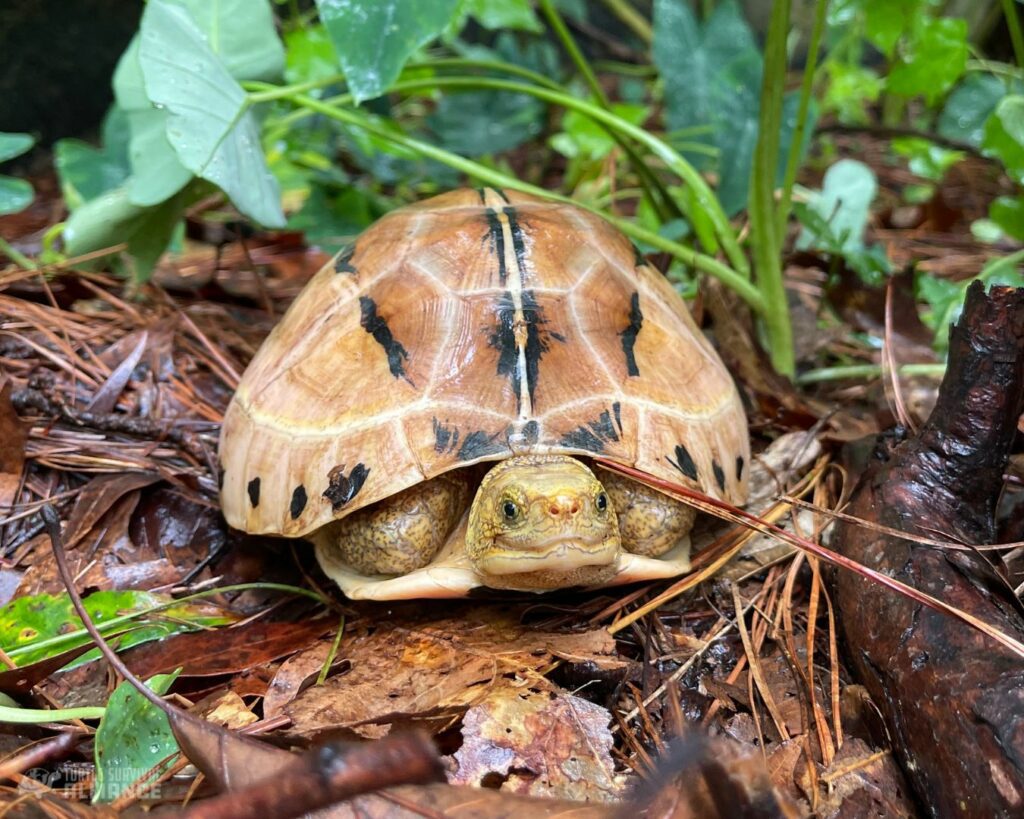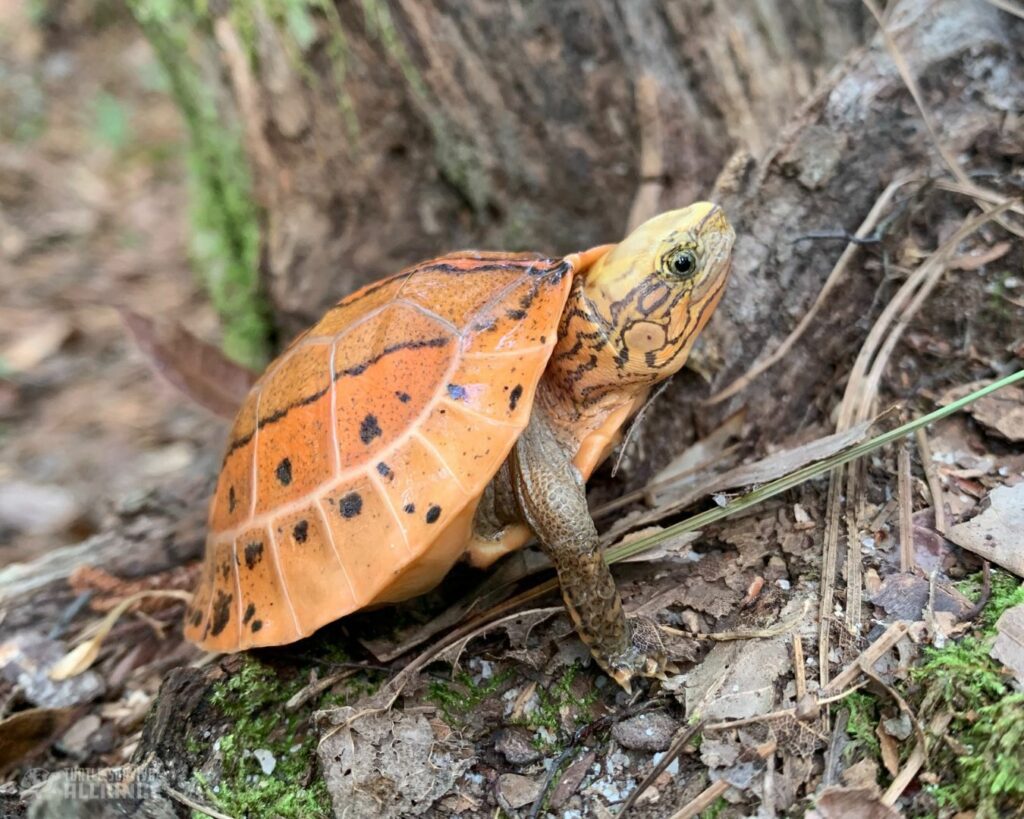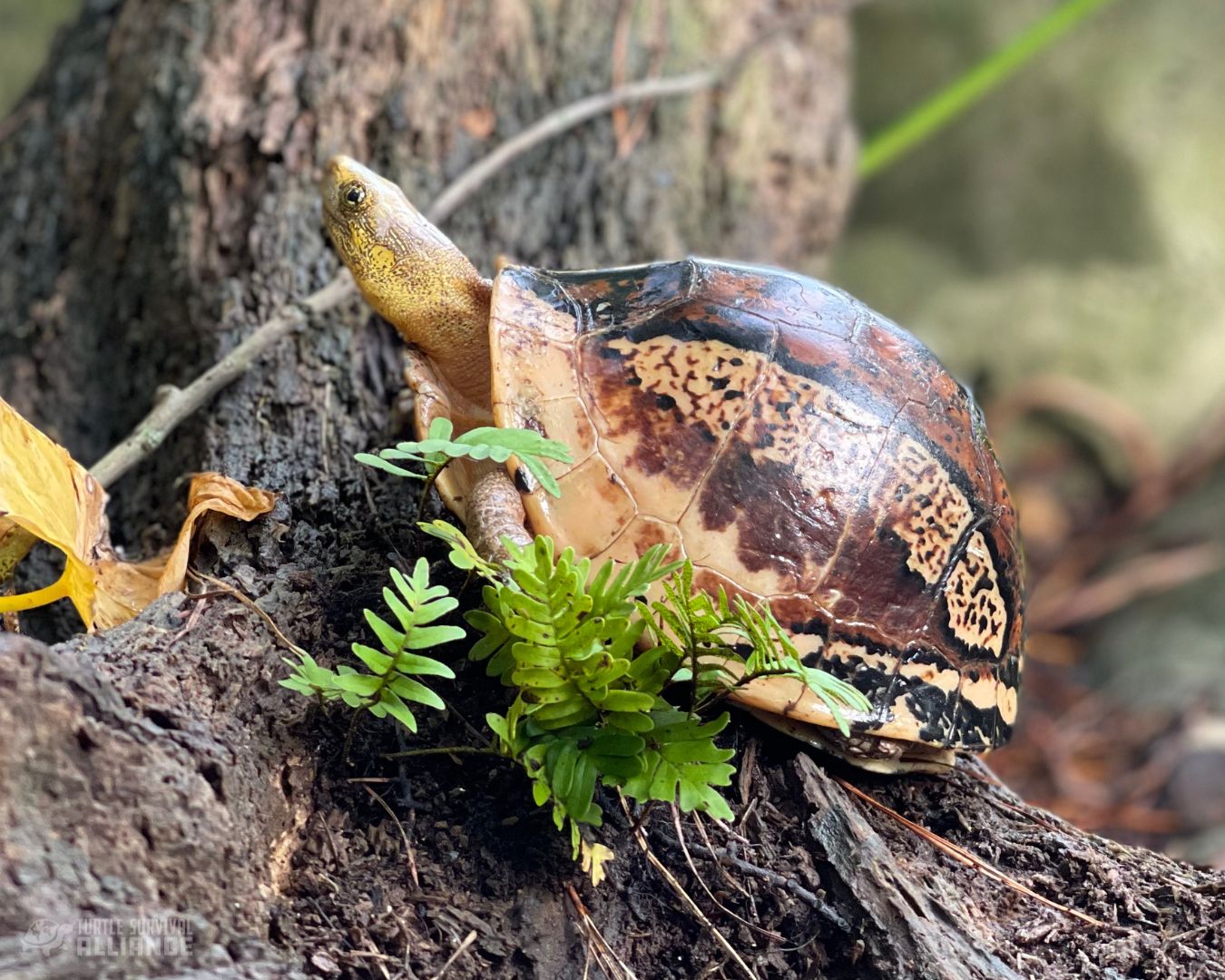The Picturesque Picturata
These turtles live in dense wet forests and are omnivores, feeding on a variety of plant and animal matter. They can be identified by an orange-brown to dark brown carapace (upper shell) that features light yellow/cream-colored bands running along the sides, and a buttery yellow head with delicate gray striations. Their plastron (lower shell) is also cream to light yellow color with a significant black spot on each plastral scute. Unique to Southern Vietnam Box Turtles is their unusually shaped pupil which can either have a blocky appearance or look like it is leaking out into the iris, like a starburst, bringing a whole new meaning to the term “starry-eyed”.

This Critically Endangered species was originally documented only in food markets in China. It wasn’t until 2010 that turtle biologists were able to observe the species in its natural habitat at the southern end of the Truong Son Mountains in Southern Vietnam.
This turtle has historically been difficult to acclimate to captive environments, making them rare in captive collections. Fortunately for us, and the future of this species, the Turtle Survival Center acquired its first captive bred Southern Vietnam Box Turtle in 2014, and has been able to successfully produce 36 hatchlings since. Our captive breeding and ex-situ assurance colony at the Turtle Survival Center contribute to the genetic diversity and stability of this rare and important species.

- Pictured: Southern Vietnam Box Turtle (Cuora picturata)
- Countries of Origin: Vietnam
- Habitat: Tropical, moist, broadleaf evergreen forests
- Wild Population: Decreasing; wild population estimated to be between 3,000 – 10,000 individuals; increasingly difficult to find
- IUCN Red List Status: Critically Endangered
- Threats: Collection for the pet, food, and medicinal trades, and habitat destruction
Photos 1 & 2: Rachel Harff, Photo 3: Cris Hagen
